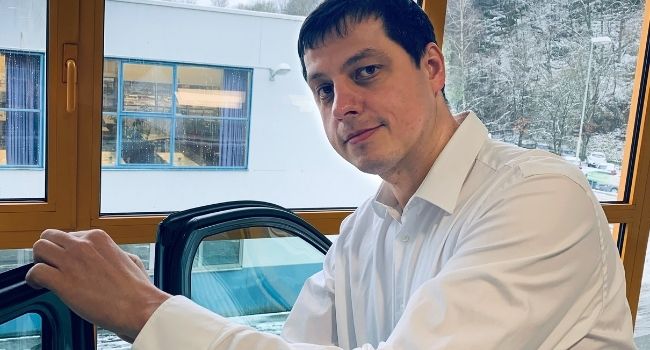SaarGummi Automotive: A Smart IT Concept for Global Product Design

Anywhere and across all systems: Real-time data for all employees
When auto makers order sealing systems for their latest car models from SaarGummi, the company’s development team wants to make sure that their processes and results are completely in line with the clients’ wishes. That’s why Christian Kast, responsible for development activities at SaarGummi, and his colleagues Dr. Lukas Nowicki in his capacity as Head of Global Product Design and development IT specialist Martin Mörsdorf, act proactively in designing the IT landscape that drives product development. We spoke to Dr. Lukas Nowicki about SaarGummi’s challenges and strategies as a Tier-1 supplier.

SaarGummi Automotive is the largest business unit of SaarGummi Group, which employs about 6,400 staff in 13 countries and at 23 locations around the globe.
Around 100,000 hours of development work per year
About 60 people work in SaarGummi’s development division, distributed across the company’s three development centers in Germany, China and India. The international team supports clients in preparing new models for serial manufacture or modifying sealing systems when the auto makers give their products a facelift.
As a global leader in auto sealing systems, SaarGummi boasts comprehensive materials expertise, engineering excellence and high-performing simulation software tools. The company invests approx. 100,000 hours of development work each year to ensure that requirements regarding function, design, weight and cost all receive equal consideration. Also, the aim of developing sealing systems with a minimum CO2 footprint is steadily gaining importance. SaarGummi supports clients in best-possible realization of their ideas and specifications.
Dr. Lukas Nowicki, Head of Global Product Design at Saargummi Automotive
Virtual prototype testing on the rise
Lukas Nowicki reports that “digital simulation is becoming more and more important to us. In many instances, we rely on virtual prototypes to give us all the insights that we used to gain from real-world testing. Just ten years ago, we needed about 30 months to bring a car sealing system to series maturity. During that time, we usually ran two prototype phases with up to 200 prototype vehicles, testing the limits of the new sealing systems under maximum conditions: -40°C at the polar circle and +50°C in the desert. We also conducted endurance tests, e.g. opening and shutting a car door up to 100,00 times to ensure that the door would perform if the vehicle was used as a taxi. But gradually this methodology changed; at some point we began running just a single prototype phase. In the last two years, we started seeing projects in which companies – startups, but OEMs too – did away with real-world prototyping altogether and relied completely on virtual testing of their vehicles.”
Simulation for shorter time-to-market
One consequence of this trend is a growing demand on computing power. Digital testing of materials and functions demands high-performance hardware that can efficiently implement methodologies like finite elements analysis. This applies to suppliers like SaarGummi, who provide product-specific verification, but also to OEMs, e.g. for virtual crash tests involving the entire vehicle.
Obviously, the goal of the auto makers is to improve their time-to-market performance. And indeed the entire development process has accelerated. Nowicki now cites an average cycle of 21 months, but he has seen projects in which car makers have set an 18-month target. However, newcomers to the industry who wanted to reduce these times even further soon had to acknowledge that such short cycles could not reflect the complexities involved in vehicle sealing systems.
Increased data exchange requires increased data security
It is often said that digitalization also increases the levels of collaboration across enterprise boundaries. Nowicki confirms this: “For certain workflows, the auto makers want us to work directly within their systems. This not only involves filing of complete CAD data, but also processes like component management or release.” He adds that the cloud plays a growing role in this type of collaboration.
Along their interconnected value chains, automotive manufacturers enhance data, link it to other data and make them available to a network. To the same degree, they must erect safeguards that protect the vulnerabilities of these structures. Accordingly, a consortium of European auto makers has developed strict security standards for managing confidential information such as vehicle CAD data or real-world prototype components. SaarGummi has proven its compliance with these high safety standards through certification.
Centralized data and licensing
The SaarGummi development team is preparing for the sweeping changes facing the industry and has therefore initiated a number of measures. With respect to updating the IT infrastructure and the software, one focal point is centralizing data and license management. Until recently, the three development centers each had their own PDM system and the data was synchronized nightly between India, China and Germany.
This is about to change: Soon, development work environments at SaarGummi will be managed centrally. In Germany, the changes have already been in effect since early 2020; the development centers in China and India will be integrated in early 2021.
SaarGummi relies on the Virtual Desktop
Dr. Lukas Nowicki explains that “the underlying technology is called Virtual Desktop Infrastructure (VDI). We have a master which we clone for our colleagues abroad. When we make changes, like rolling out a new application, we do so in the master, and the next morning all users will find exactly the same new software or settings on their CAD workstations. To make this possible and run friction-free and lossless, Christian Kast created the ′Development IT′ function three years ago and integrated it into my field of responsibility. That means I’m well prepared to deal with any future requirement.”
The master, also called the “golden image”, is hosted by a SaarGummi computing center. When the development engineers log on to their computers and open an application, they access a virtual workspace via video stream. User input at the real-world end devices is transmitted the same way – a virtual mouse and a virtual keyboard is used to operate a virtual computer.
Easy system maintenance, secure data storage
SaarGummi relies on VDI to substantially reduce costs and effort in managing the global user landscape of its development division.
Another major benefit is data security: “The golden image that includes all data and applications is stored at the computing center. The data never leave the center, because the users only receive a video representation of their applications. There’s no way for malware to even get at the data”, explains Lukas Nowicki.
This is not only a decisive argument for SaarGummi itself, it’s also a basis on which partners evaluate the company: “VDI is a decisive contribution to our compliance with IT security standards”, says Nowicki.
Working from anywhere – even in development
So, how have users been managing with remote access to the system? “You can work seamlessly with a standard internet connection”, says Nowicki. “Workflows are just as smooth as when you work from the office because the VDI environment doesn’t require high-speed internet. Especially during the pandemic, being able to work remotely has been a great benefit. It wasn’t just that we could switch to remote work immediately wherever required. In emergencies, we were even able to support our clients.”
From the users’ point of view, the list of VDI’s benefits doesn’t end there: Their application landscape is automatically updated and synchronized with their tasks. It’s easier for them to coordinate and consult with one another because everyone uses the same interface. In customer support and acquisition, employees now have remote access to all system data for which they have clearance. In the past they had to download the necessary documents before an appointment – and hope they haven’t forgotten anything.
Next step: Integrated systems and automatic data updates
Clearly, SaarGummi has already achieved a great deal in terms of boosting work efficiency and modernizing the work tools of its development division. But the company doesn’t plan to stop there.
The 2021 agenda lists the upcoming milestone on the road to the “single source of truth” principle: Each piece of information only exists once, and it is automatically processed and transferred from system to system.
The SaarGummi development team has identified important potentials for improvement in this field: “Today, the same information travels from system to system or from Excel to Excel, and sometimes it has to be moved manually. This isn’t just cumbersome, it’s also error-prone. When there are changes, for example, the corresponding data must be updated in various systems.”
To change this, Saargummi Auomotive needs to integrate the existing systems - first within the department, then in other areas of the company as well.
These integrations are key because there will continue to be islands within the IT architecture in the future: "We rely on specialist applications, for example, in costing, sales, project management or quality inspection. When purchasing new software, the necessary interfaces are specified in the same way," explains Nowicki.
And the cloud? It will come, but from outside
This leaves the question of whether SaarGummi will systematically shift applications to the cloud. “We have run some initial tests”, says Nowicki. “Currently we’re in the discovery phase, looking at installations that could be suited to the cloud, processes where the cloud could be meaningful, and the costs that migration would entail.”
Stelios Valtzis, Director Global IT at SaarGummi, is open to such developments thanks to his proven success in digital transformation and experience in industries like telecommunications, shipping, health and defense. He says: “Just a few years ago, it would have been unthinkable for anyone in our line of business to shift company data to an outside location.”
Valtzis has provided departments with a guidebook to help them navigate the digital transformation. The objective behind this is to achieve global standardization within the company.
Don’t hold your breath for SaarLexa …
Listening to Nowicki, one could come to believe that all the challenges of digital transformation have been solved, or are about to be.
Are there any wishes left open? “Actually, what would be very helpful is an artificial intelligence for the entire technical content at SaarGummi. Our own Siri or Alexa. Instead of surfing Lessons Learned files or wikis, the employee could just ask our enterprise AI."
So can we report on the unveiling of SaarLexa next year? Nowicki laughs: “We’ll have to leave that to someone else. Our pioneering efforts were directed at the Virtual Desktop Infrastructure, and we have produced the first successful industry reference for it.”